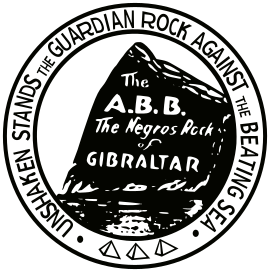African Blood Brotherhood facts for kids

The African Blood Brotherhood for African Liberation and Redemption (ABB) was a group in the United States that fought for the rights and freedom of Black people. It was started in 1919 in New York City by a journalist named Cyril Briggs. The ABB began as a secret organization that spread its ideas through writing.
The group believed in socialism, which is the idea that a country's resources should be shared among all its people. This got the attention of the new American communist movement. Soon, the ABB started working with the Communist Party of America to share their message. The group ended in the early 1920s.
Contents
Background
In the early 1900s, a movement for the freedom of Black Americans grew in the Harlem neighborhood of New York City. Many people in this movement were immigrants from islands in the Caribbean. In their home countries, they were part of the majority. But in America, they suddenly became a minority group that faced unfair treatment. Because they had lived under the control of other countries, many were against capitalism (where trade is controlled by private owners for profit) and empire-building.
Who Was Cyril Briggs?
Cyril Briggs was one of these immigrants. He was born on the island of Nevis and moved to Harlem in 1905. In 1912, he became a journalist for a major Black newspaper, the New York Amsterdam News.
During World War I, President Woodrow Wilson talked a lot about "national self-determination"—the idea that people should be able to govern themselves. Inspired by this, Briggs started a magazine in 1918 called The Crusader. At first, he used it to promote the idea that Black people should return to an Africa free from the control of other nations.
The magazine was originally started by George Wells Parker, a businessman who believed Africa was the cradle of civilization. He used the magazine to share his ideas about Black history and pride.
A Change in Ideas
By 1919, Briggs's views began to change. He started to see that poor Black workers and poor white workers in America faced similar problems. He began to believe that the system of capitalism was the main cause of their struggles. He argued that workers of all races should unite and work together for a better life.
The Crusader became very popular, especially in Harlem, and was read by about 36,000 people.
How the Group Was Formed
The summer of 1919 was a time of intense racial conflict in America, known as the "Red Summer." Soldiers were returning from the war, and there was a lot of tension. This led to violent riots in cities like Chicago and Omaha.
In response, The Crusader told its readers that they should be prepared to defend themselves. Briggs wrote that capitalism was the root cause of the oppression of poor people, no matter their race. He supported the ideas of Marxist thinkers but believed that African Americans needed their own separate organization for self-defense.
In September 1919, The Crusader officially announced the creation of the African Blood Brotherhood (ABB). Its main purpose was to protect Black communities from racist violence.
Briggs soon connected with other Black leaders and writers like Otto Huiswoud and Claude McKay. They introduced him to white members of the new Communist Party, who were very interested in issues of racial equality. In 1921, Briggs himself joined the Communist Party.
Disagreements and Challenges
The ABB tried to work with another major Black organization, the UNIA-ACL, which was led by Marcus Garvey. ABB leaders like Briggs and McKay even attended UNIA conferences.
However, the ABB grew critical of Garvey, especially after his shipping company, the Black Star Line, seemed to fail. They also disagreed with Garvey's meeting with a leader of the Ku Klux Klan in 1921. In 1922, The Crusader became the official magazine of the ABB and tried to convince UNIA members to join their group instead.
The ABB also faced challenges from the government. Police and federal agents began to investigate the group. The government placed secret agents inside the ABB, the UNIA, and other similar groups. These agents gathered information and sometimes tried to disrupt their meetings.
The ABB gained some fame after the Tulsa Riot of 1921. The city of Tulsa had an ABB chapter, and some news reports said the group helped inspire the Black community to resist the attacks.
Joining with the Communist Party
The Crusader magazine stopped printing in 1922. As the ABB worked more closely with the Communist Party, it stopped trying to find new members on its own.
The leaders of the Communist International (a global organization of communist parties) believed it was important to fight against all forms of oppression, including racism. They encouraged the American Communist Party to pay more attention to the struggles of Black Americans.
New Ideas on Freedom
The poet Claude McKay, who was an ABB member, traveled to the Soviet Union. He wrote a book called The Negroes in America. In it, he argued that the oppression of Black people in the U.S. was unique and not just about economics. He believed in national self-determination, which to him meant that African Americans should have their own independent government, separate from the United States.
Following these ideas, the Communist Party later adopted a policy of "national self-determination" for African Americans living in the South. This policy was active for many years.
In the early 1920s, the African Blood Brotherhood was officially dissolved. Its members became part of other organizations within the Communist Party, like the Workers Party of America. Many of the ABB's early members continued to be important leaders in the Communist Party for many years.
Membership
At its most popular, the ABB had fewer than 3,000 members.
See also
- The Communist Party and African-Americans
- Harry Haywood
- Alternative press
- Black separatism
- Black nationalism

